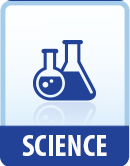|
This section contains 218 words (approx. 1 page at 300 words per page) |
Thiols are molecules which contain an SH group. They are structurally similar to alcohols which contain an OH group. Chemically, thiols and alchohols react similarly.Oxygen and sulfur both appear on the same column of the periodic table with oxygen in the second row and sulfur in the third. In 1834, W. C. Zeise discovered thiols. Zeise named thiols as mercaptans because they readily react with mercury to form an insoluble salt. Thiols tend to be a clear liquid or white crystalline form. Characteristic of other sulfur-containing compounds, thiols have a stench that smells similar to rotten eggs.
Chemically, thiols occur readily in petroleum processes such as distillation. Biologically, thiols are found in the human body in protein linkages. The amino acid cysteine contains a thiol group, which bands with another cysteine to form disulfide bridges. Thiols are also found naturally in garlic, onions, coffee, and skunk secretions. Because of thiol's distinct odor, it is often added to odorless gases such as methane in order to detect leaks. It can also be used for corrosion protection of antifreeze, regulation of polymerization, and manufacture of insecticide and pharmaceuticals. In recent technology, thiols are used to create self-assembled monolayers (SAMs) on gold and other noble metals, which are protected from oxidation and other chemical effects.
|
This section contains 218 words (approx. 1 page at 300 words per page) |


